The magic of nature around us is one of the most important fundamental things in the Universe because it is required for the existence of life.
Table of Contents
Toggle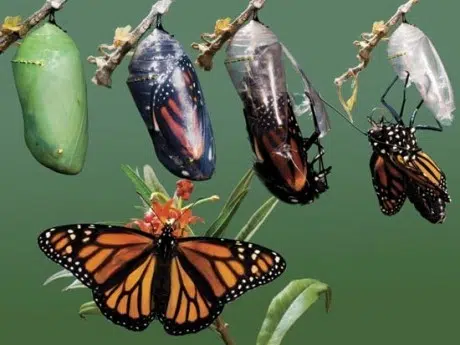
The earth is the only planet known to support life and it is the third closest planet to the sun. It possesses prominent climatic features which help to survive the organisms on its surface.
It’s really amazing how nature transforms its creation so significantly that becomes hard to believe.
Sometimes we feel like certain magic is happening around us. It might be because of evolution, hormonal, physiological, environmental, etc., or accidentally due to certain defects, these changes happened and were later naturally selected.
There are so many mysteries hidden inside nature. It wouldn’t be wrong if we call Nature the magician to do things without our concern in a positive manner without any harm to other organisms.
Metamorphosis of Caterpillar to Butterfly
Caterpillars are voracious feeders and many of them are among the most serious agricultural pests. The 12-legged pest changes into a beautiful butterfly with wings through a process called Metamorphosis. After hatching it is called Larva and feeds upon leaves.
These young ones undergo 5 instar stages called molting to become adults. When they grow in size their skin peels off from the body at each stage & forms new cuticles as per size.
At the final stage, it stops feeding & hangs downwardly through a twig forms Pupa. They remain dormant inside the cocoon made of silk due to some secretion from their salivary gland.
During the pupal stage cells in the larva’s muscles, gut, and salivary glands are digested and act as spare parts for the upcoming Butterfly. Each cell is programmed for self-destruction through the activation of enzymes called Caspases (Pro-apoptotic proteins).
In the larval stage, there are 2 types of cells, larval cells for the juvenile and imaginal cells for adults lying inside it waiting for the signal for differentiation.
Two effector hormones: the steroid 20-hydroxyecdysone (20E) and the lipid Juvenile hormone, are two important hormones of molting & metamorphosis.
20E regulates the gene expression of larva at each molt release from the Prothoracic gland as Ecdysone later modified to 20E, a juvenile hormone secreted from corpora allata inhibits the genes responsible for the development of adult characteristics (e.g. wings, reproductive organs, and external genitalia), causing the insect to remain immature.
The corpora allata cells atrophied during the last larval stage, and stop producing juvenile hormones for metamorphosis. Ecdysone helps the pest to pupate, imaginal cells differentiate for adult structures such as form wings, antennae, legs, eyes, genitals, and all the other features of an adult butterfly.
Metamorphosis is not just the physical transformation, although. It displays some extraordinary changes through evolutionary mechanisms. Butterflies and caterpillars don’t just look different; they have different habits and habitats also. One lives in trees and crawls, and the other flies.
One has dangerous bristles with poisonous activity other without defense. Most importantly one eats leaves and the other solely feed on nectar. There is plenty of ecological intercepts since they don’t interfere with each other’s food stocks. It’s awesome how nature plays with its creatures.

Transformation of a caterpillar into a Butterfly
You May Also Read: The Air Quality Index (AQI) of your area may be responsible for your illnesses
Salamander Limb Regeneration:
Regeneration refers to the rebuilding of a new part once again, which is often seen in plants but it’s breathtaking in the animal world. Salamander shows regeneration of excised limb within some days is extremely magical.
Excision aggregates the dedifferentiated cells at the wound and forms regeneration blastema (within 6-12 hrs).
The nerves of the limb degenerate up to some extent during amputation so now the wound epidermis liberates some protease that allows single cells to undergo dramatic differentiation.
Such differentiation includes osteocyte, fibroblast, and myocytes along with downregulation of certain genes (myf5, mrf4), and up-regulation of the msx1 gene that is associated with the proliferation of regeneration blastema.
Eventually, the wound epidermis redifferentiates to form new structures called Apical Epidermal Cap (AEC). AEC stimulates blastema by secreting fgf8 (fibroblast growth factor) but is unusable if it has no nerve.
Newt Anterior Gradient protein (nAG) is a nerve-derived mitogen used for the proliferation of blastema. nAG induced in Schwann cell that surrounds the neuron within 5 days of the amputation.
During regeneration, each cell keeps its memory of where to form means muscle cell only forms from old muscle cells and so on. So Blastema is a combination of specified Progenitor cells.
Regenerating blastema depends upon the ion gradient driven through the pump. Inactivation of these ion pumps fails the blastema for regeneration.
Tbx5 (forelimb) and Tbx4, Pitx1 (hindlimb) are involved in limb development. Sonic-hedgehog (anterior-posterior axis), FGF (proximal-distal axis) & Wnt7a (dorsal-ventral axis) regulates development.
Retinoic acid (RA) synthesized in the wound epidermis of regenerating limbs forms a gradient along the anterior-posterior & proximal-distal axis of blastema and induces HOX genes (Hoxa) to start developing the organ.
This gene is well known for its position and specificity, each cell help to dedifferentiate the new limb. HOX gene mediates the upregulation of cell adhesion protein CD59 in response to RA. But the actual mechanism of HOX gene is still unknown.
Meis genes also activated in response to RA are associated with limb regeneration.
Regeneration clears lots of mechanisms, as we know human liver also shows regeneration maybe within some years we would get the mechanism to regenerate the lost parts then there is no longer the need for surgery.
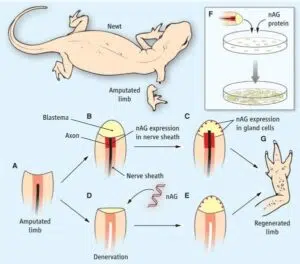
Pearl inside Oyster:
Natural pearls are made from pearl oysters (Pinctada radiate). Although it’s done naturally inside the deep sea down and requires many years nowadays for Industrial purposes, many artificial processes are being used for it.
It’s basically due to the accidental introduction of any parasite or a piece of shell and can’t exclude.
In culture, sand particles introduce into it by a certain mechanism. In response the oyster secret some substances called Nacre (mother of pearl) for defense.
It’s one of the protection mechanisms that ultimately lead to a beautiful pearl. Nacre is secreted layer by layer until the foreign particle is not covered completely.
That deposition contains 2 basic substances that are required for the oyster itself i.e. conchin and peculiar.
These proteins together form conchiolin and have many porous spaces, to fill these spaces oyster secrets aragonite crystals are made up of calcium carbonate(CaCo3) which is the main ingredient of oysters.
Both conchiolin and aragonite together form nacre in combination with elastic biopolymers (lustrin & chitin).
When these are deposited in layers around the object, it becomes a mature pearl. The stones or gems we get from mines need to be polished and processing to get a proper shape and shine but pearls don’t need extra attention.
They have born from oysters with complete shinning, luster, and inner glow. The alignment of calcium carbonate microscopic crystals produces a rainbow of light and color when light passes through it.

Natural Pearl inside the Oyster
You May Also Read: Beware of Newly Discovered Vaccine-resistant Coronavirus of Russian Bats!
Mother’s Womb:
It’s still been a mystery how a live multicellular individual can develop from a single cell inside the womb in mammals.
Reproduction clears the mechanism of forming new offspring but inside the uterus what condition leads to it is still unclear. Little ones spend nine months growing in the womb and what they experience there is still a bit of a mystery.
It’s hard for doctors to test what babies are actually doing and learning. One of the most important things is whatever the newborn baby does outside has already been done inside the womb.
The most mind-blowing thing is the baby can sense all the things the mother does and also react if doesn’t like that.
According to a recent study published in the journal “Infant Behavior and Development” by the University of Florida, researchers asked pregnant women in their third trimester to read classic verses to their bellies twice a day for several weeks.
In the uterus, the baby’s heart rate slowed when the rhyme was read by the mom and continued to lower even when a stranger’s voice took over storytime a few weeks later.
This study clearly indicates that not only baby can sense these movements, but also can hear and identify the voice of a person.
Although if we talk about the gametes (germ cells) those play a major role i.e. Sperm (Male gamete) is unable to fertilize without the help of the Ovum (female gamete) inside the fallopian tube.
Experiments proved that the ovum solely determines the movement of sperm towards the ovum (progesterone from ovum) and maturation of sperm inside the uterus in the case of mammals (release of certain blocking agents in response to ovum prior to fertilization).
After the fusion of gametes, the Zygote (fused diploid cell) implants into the uterus at the endometrium (the innermost layer) and grows inside the uterus, dividing mitotically. It’s one of the strongest muscular zones to protect the new one from all injuries.
From a mass of cells the bones, muscles visceral organs all develop in the perfect place, it’s like someone just arranged these organs in their places. Within some days automatically the heart starts pumping blood within the mass of cells.
No evidence is there of how life came into existence in a mass of cells. Subsequently, new organs developed along with all the requisites for growth like an umbilical cord for nutrition, chorion for gas exchange, allantois for excretion, and amniotic fluid to provide a water medium for movement.
Paleontological evidence provides us with lots of information about the development of new individuals throughout the evolutionary period but still, it’s full of doubt about how can a new individual form inside the uterus but in the artificial conditions with all the requisites it is unable to succeed.
It’s amazing & doubtful also how a live individual can survive up to 9 months inside a water medium but after delivery, it can’t survive inside the water at all. God just provides all the needs that the baby needs most during its development.
So it’s really amazing how nature plays with its creature is none other than pure magic.
You May Also Read:
Newly discovered COVID-19 antibody can neutralize it’s all variants
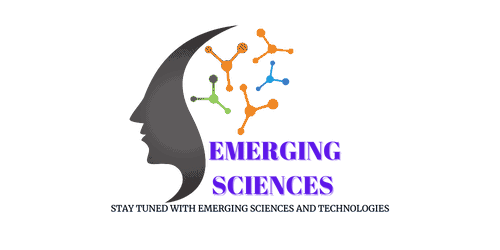


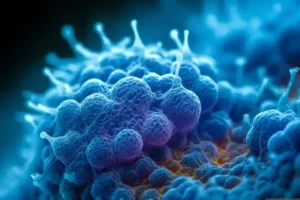

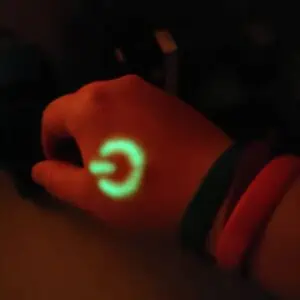


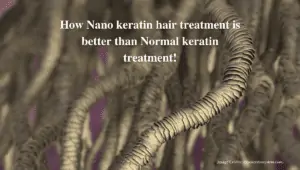







2 thoughts on “Magic of Nature Around Us – Interesting Natural Transformations I 2022”
Howdy! Do you know if they make any plugins to protect against hackers?
I’m kind of paranoid about losing everything I’ve worked hard on. Any tips?
kindly go through the Blogging related website or contact any web developer, they might suggest you very well…
Thank you